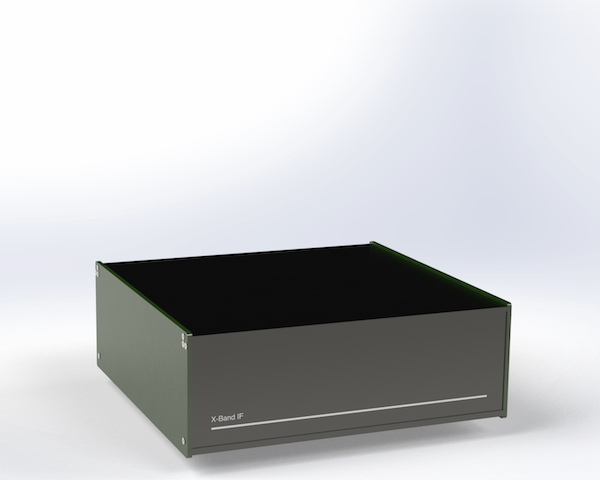
Bridge12 X-Band IF
The Bridge12 X-Band IF system is a compact EPR bridge pulsed EPR spectroscopy. At a compact size of 13.4 in. x 12.5 in. x 4.5 in. the system is highly modular and can extended with user defined capabilities. The X-Band IF is at the heart of the EPR spectrometer and controls all other components. The system uses an external digitizer and Arbitrary Waveform Generator (AWG, optional) for maximum flexibility.
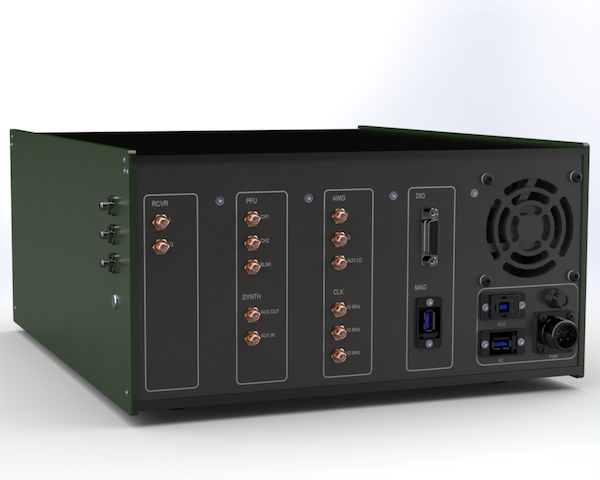
A Pulsed X-Band EPR Bridge
The Bridge12 X-Band IF system can be operated as a single frequency X-Band (10 GHz) EPR spectrometer. The system does not have an integrated circulator and is therefore ideally suited when operating probes with integrated cryogenic low-noise amplifiers. An external circulator circuit with protection switch is available to operate regular probes. Different amplifier options are available to generate high-power microwave pulses.
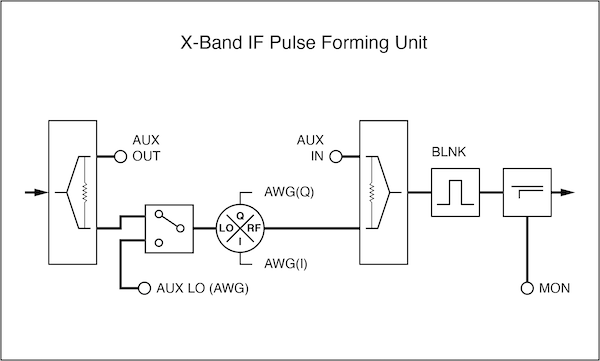
Pulse Forming Unit (PFU)
The Bridge12 X-Band IF system has an internal, single-board Pulse Forming Unit (PFU) to create microwave pulses. Instead of relying on fast PIN diode switches, the Bridge12 X-Band IF system uses an I/Q Mixer, driven by an Arbitrary Waveform Generator (AWG). Using modern AWGs, this gives the user the highest flexibility for pulse creation. For maximum modularity, the user has access to the LO frequency through the AUX OUT port, can inject a user generated signal through the AUX IN port or change the LO frequency for the I/Q mixer independently from the system LO frequency by using the AUX LO (AWG) port. The output can be monitored through the MON port.
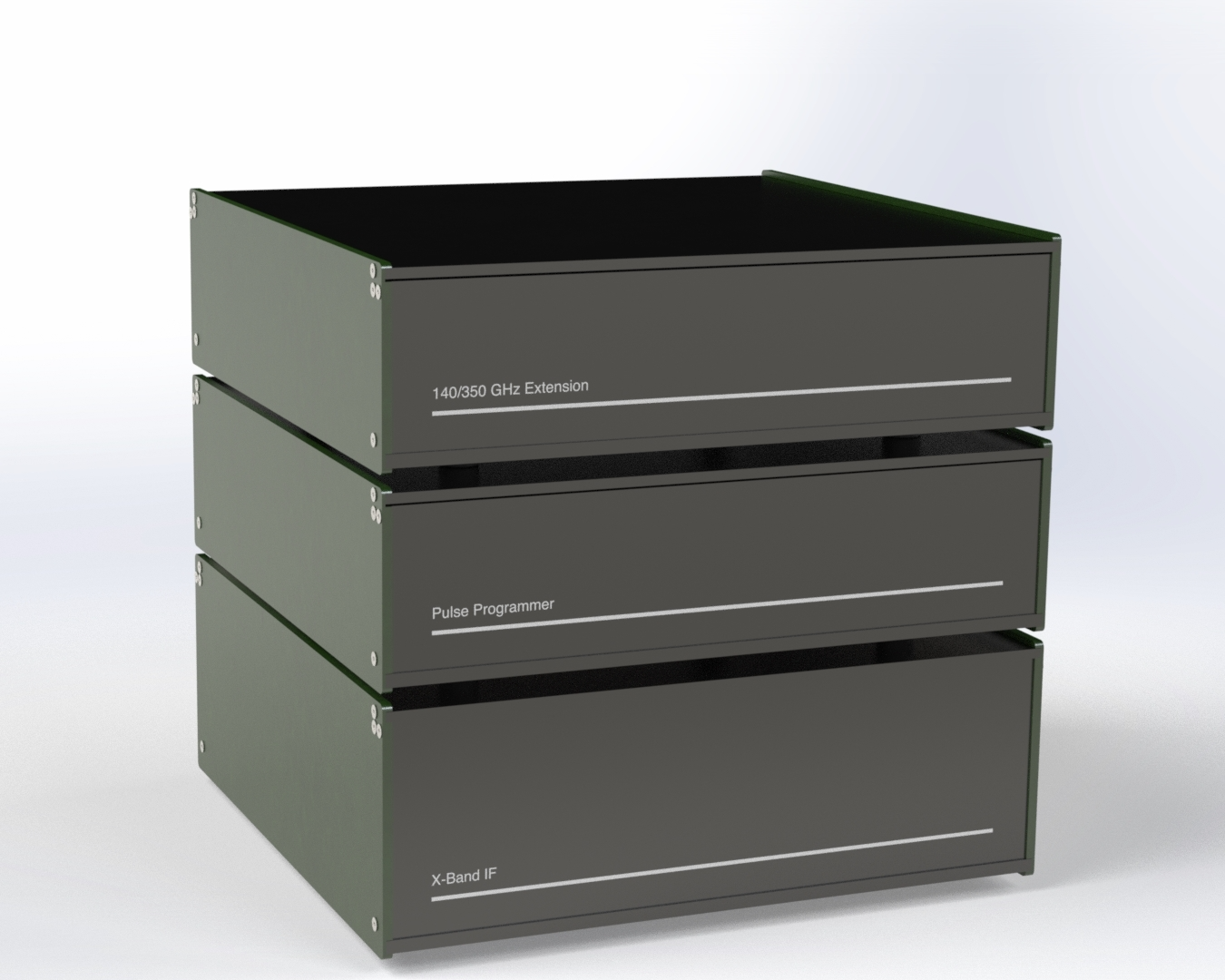
A Modular System
The system is highly modular and new capabilities can be added at any time. The Bridge12 X-Band IF system is the basis for all Bridge12 multi-frequency EPR spectrometers. Using frequency extensions (e.g. Q-Band, W-Band, 140/350 GHz) multi-frequency EPR spectroscopy can be performed on the same spectrometer. The signal path is automatically configured through the software. An additional pulse programmer can be added when more channels are required.
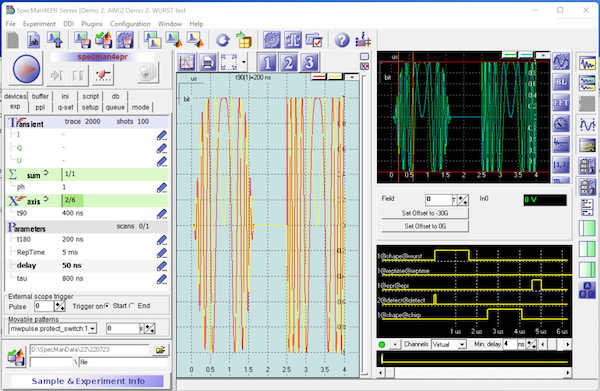
Powered by SpecMan4EPR
The Bridge12 X-Band IF is powered by SpecMan4EPR (Prof. Boris Epel, University of Chicago). The software is flexible and allows integration of many different devices. The interface is designed to satisfy most advanced experimental needs but hides the underlying complexity. SpecMan4EPR’s powerful pulse engine translates a command-based description of pulse sequences into digital pulses or arbitrary waveforms. The software can perform real-time FFT and baseline correction and has a built-in job queue. Even inexperienced users can run complicated experiments. The software allows multiple configurations to provide a unified interface for different spectrometers.
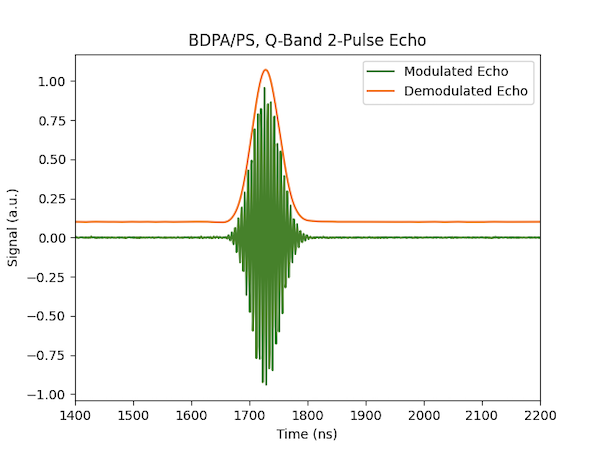
Digital Demodulation
For increased sensitivity and to reduce baseline artifacts, the Bridge12 X-Band IF system does not perform a down-conversion to DC of the EPR signal for detection. Instead, the EPR signal is detected at a (user-specified) intermediate frequency (here 220 MHz, see figure) and demodulated at the time of the acquisition directly in SpecMan4EPR.
The Bridge12 X-Band IF was developed partly under a Small Business Innovation Research (SBIR) Grant by the National Institute of General Medical Sciencies (NIGMS) of the National Institutes of Health (NIH).
Technical Specifications
- Operation Frequency: 8-12 GHz
- Maximum Output Power: 10 dBm (amplifier required for high-power operation)
- Discreet or AWG pulses
- External LO for AWG
- AWG (default configuration)
- Bandwidth: 400 MHz
- Sample Rate: 1.25 Gs/s
- Memory: 2GB
- Resolution: 16 Bit
- More options available
- Receiver (default configuration)
- Total Gain > 100 dB
- Bandwidth: 1.5 GHz
- Memory: 4 GB
- Sampling Rate: 2.5 Gs/s
- Resolution: 8 Bit
- Integrated 10 MHz clock
- Optional: Continuous wave detection
- Dimensions: 13.4 in. x 12.5 in. x 4.5 in.
- Weight: 15 lbs
- Computer hardware included
- All cables and power supply included
- Pre-configured pulse sequences e.g echo-detected FS, PELDOR/DEER, DQC, ESEEM, HYSCORE, …